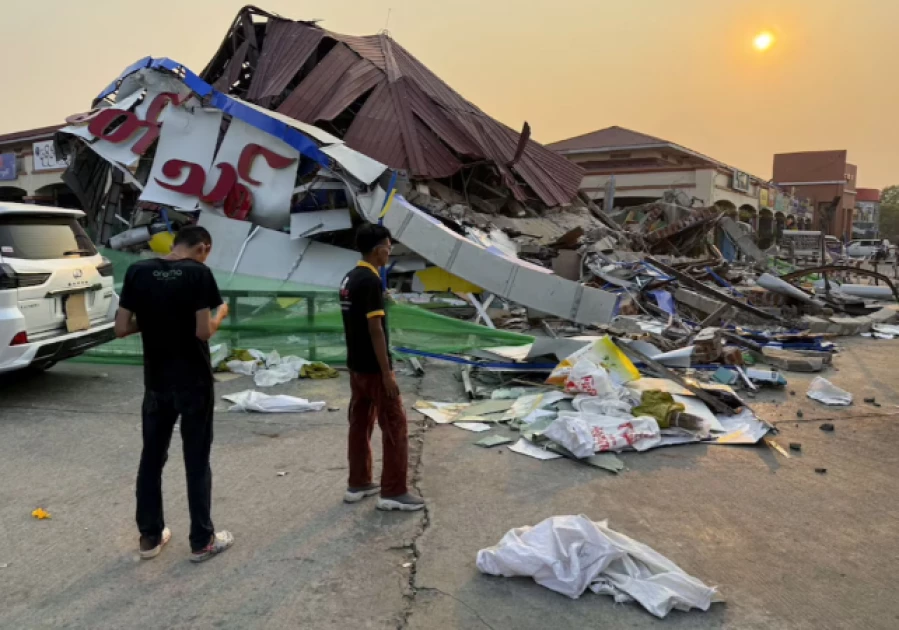Myanmar quake struck mosques as minority Muslims gathered for Ramadan prayers

People stand near a commercial facility which collapsed due to an earthquake, in Naypyitaw, Myanmar March 29, 2025, in this photo released by Kyodo. Kyodo/via REUTERS
When Friday's powerful earthquake
struck central Myanmar, Htet Min Oo was performing ritual ablutions before
Ramadan prayers at a mosque next to his house in Mandalay.
His home collapsed along with part of the mosque, trapping half his body with the rubble of a wall that buried two of his aunts. Residents raced to pull the aunts out, he said, but only one survived.
Htet Min Oo, 25, said two uncles and his grandmother were
also trapped under piles of concrete. With no heavy equipment available, he
tried desperately to clear the rubble with his hands but could not shift it.
"I don’t know if they are still alive under the debris.
After so long, I don’t think there’s any hope," he said on Friday.
"There’s too much rubble and no rescue teams have come
for us," he added, his voice shaking as he broke into tears.
Hundreds of Muslims are feared among the dead in Myanmar
after the shallow
quake struck as worshippers gathered at mosques for Friday prayers in
the holy month.
More than 50 mosques sustained damage, according to the
shadow National Unity Government.
A 39-year-old resident of the Mandalay region described
harrowing scenes as he tried to save a man trapped under the debris of a
collapsed mosque in Sule Kone village, but had to flee because of strong
aftershocks.
"I had to leave him behind ... I went in a second time
to try to save him," he said, declining to be identified.
"I retrieved four people with my own hands. But
unfortunately, three were already dead and one died in my arms."
He said 10 people had been killed there, and that they were
among 23 who died at three mosques that were destroyed in the village.
Government restrictions had prevented them from being upgraded, he said.
Muslims are a minority in predominantly Buddhist Myanmar and
have been marginalised by successive governments, while ultranationalist groups
and extremist monks have in recent years incited violence.
Myanmar authorities have for decades made it difficult for
Muslims to obtain permission to repair or build new mosques, according to a 2017
report by the U.S. State Department, which said historic mosques have
deteriorated because routine maintenance was denied.
Buddhist buildings were also badly hit by the quake, with
670 monasteries and 290 pagodas damaged, according to the military government.
It did not mention any mosques in its damage report.
Reuters could not reach the mosques or verify the accounts
of the collapses.
One man, Julian Kyle, appealed on social media for heavy
equipment to lift concrete pillars after the quake destroyed another Mandalay
mosque.
"Underneath the rubble, my family members and others
were crushed and lost their lives," he posted. "We desperately want
to recover their bodies."
A resident from the town of Taungnoo, about 370 km (230
miles) away, said he was praying when one side of the Kandaw mosque caved in on
two rows of men seated before him.
"I saw so many people carried out from the mosque, some
of them died right before my eyes," he said. "It was truly
heartbreaking."
Want to send us a story? SMS to 25170 or WhatsApp 0743570000 or Submit on Citizen Digital or email wananchi@royalmedia.co.ke
Comments
No comments yet.


Leave a Comment